2 New Surveys Find Teachers Stressed by Shutdown, Unable to Contact Students and Feeling Their Confidence Drop
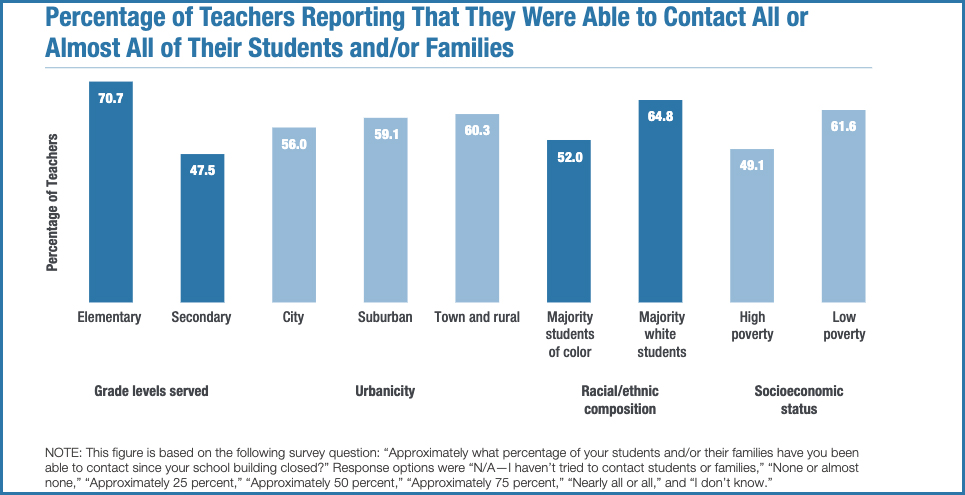
Two new surveys of teachers and school administrators confirm some of the worst fears about the switch to distance learning since the pandemic struck: The vast majority of teachers could not teach all the material they were supposed to, teacher confidence plummeted in schools without supportive working conditions, and fewer than half of teachers in high schools, high-poverty schools and schools serving a majority of children of color were able to contact their students.
In the latest survey of its American Educator Panels, the RAND Corp. found that just 12 percent of teachers said they ended the last school year having covered all or nearly all of the planned curriculum. The panels are nationally representative sets of teachers and school administrators canvassed regularly about a variety of topics. For this report, researchers relied on some 2,000 completed surveys, slightly more than half from teachers and the rest from administrators. Teachers in city or suburban schools were twice as likely to report having covered a full year’s material as those in towns or rural areas.
Teachers in schools where 75 percent or more of students are economically disadvantaged were much more likely to say they concentrated on reviewing past material than their counterparts at low-poverty or majority-white schools. Twenty-six percent of teachers surveyed at high-poverty schools reported teaching “all or almost all review,” while 28 percent said they “mostly” focused on reviewing past lessons. At low-poverty schools, by contrast, 19 percent reported teaching virtually all new material and 24 percent mostly new lessons.
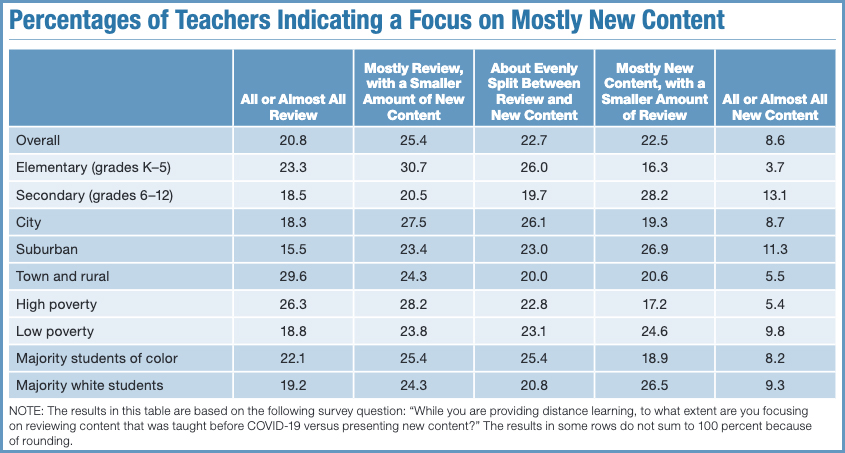
One-fourth of principals surveyed said students’ lack of internet access was a major problem, while 62 percent said it was a minor obstacle. One-fifth of principals said they lacked access to high-quality materials, and 30 percent said they needed training on how to support teachers during distance learning.
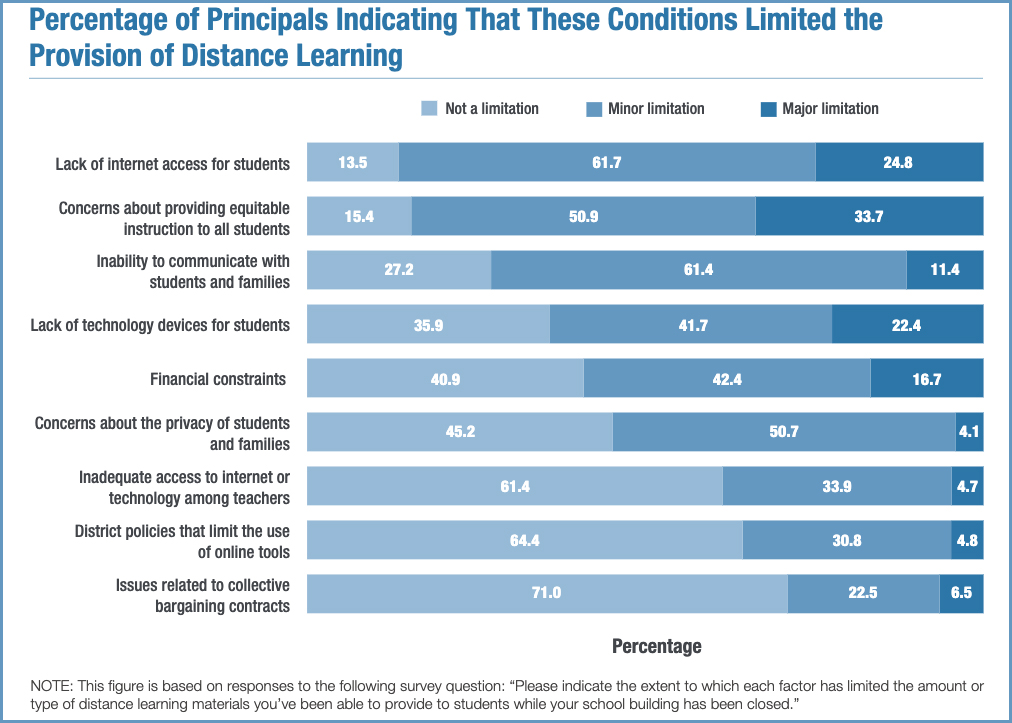
Fifty-nine percent of teachers and 77 percent of principals said they were able to contact all or nearly all of their students and families during school closures, though this number varied considerably depending on school demographics. In elementary schools, 71 percent of teachers said they were able to contact all or nearly all of their students, versus 47.5 percent of secondary teachers. Educators were more likely to report being able to communicate with students and families in low-poverty and majority-white schools.
By far the largest need cited by teachers was strategies to keep students engaged and motivated during distance learning. Forty-five percent said it was a major need, and 39 percent called it a minor or moderate one. Nearly one-third said they did not receive adequate guidance to support students with mild to moderate disabilities.
A second survey, by Upbeat, a consulting firm that collects and analyzes data with an eye toward teacher retention, looked at educators’ experiences of teaching at home. Upbeat surveyed 7,200 teachers in nine states and found both high levels of stress and positive feelings about schools’ support for educators during the pandemic-related closures.
Overall, researchers found that the percentage of teachers who feel successful dropped from 96 percent to 73 percent during distance learning, but with wide variations depending on how supportive they perceived their schools to be. In schools seen as supportive, the percentage of teachers who felt successful after the shift to remote learning dropped from 99 percent to 93 percent. In unsupportive schools, it plummeted from 90 percent to 48 percent.
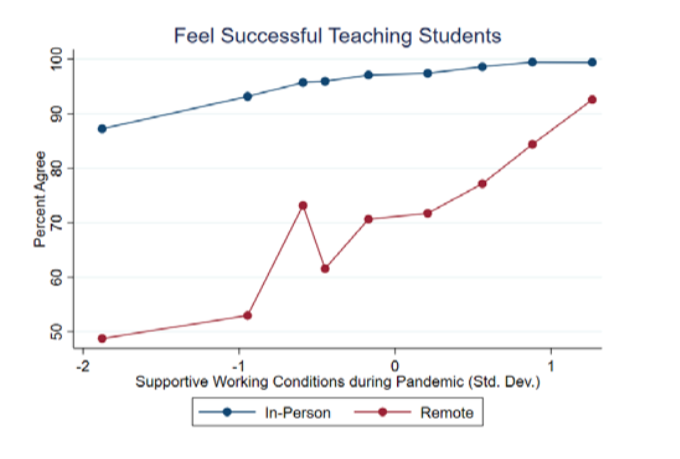
Mid-career teachers, who are most likely to have young children and aging parents, reported the most stress over balancing work with other responsibilities, with 51 percent saying that caretaking obligations made teaching difficult. Veteran teachers were three times as likely as early-career educators to report being uncomfortable with distance-learning technology.
Teachers surveyed by Upbeat estimated that 60 percent of their students regularly engaged in remote learning, with wide gaps depending on racial and socioeconomic status. In schools where fewer than 10 percent of students are Black, teachers reported that 72 percent of students regularly engaged in remote learning, versus 45 percent in schools where 50 percent or more are Black.
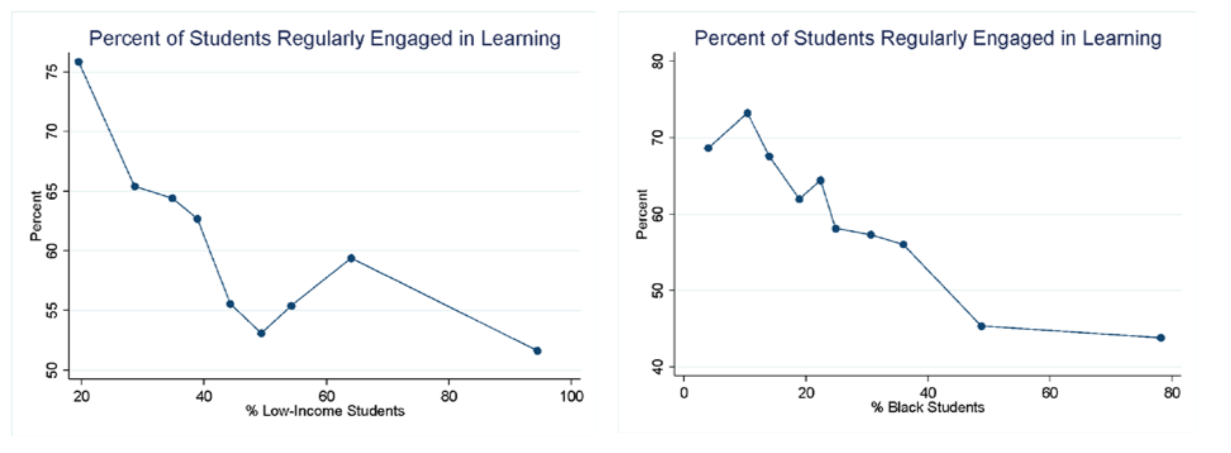
The report’s authors suggested that this range is likely the result of systemic inequities — including historically under-resourced schools — that have a disproportionate negative impact on communities of color and that have been compounded by COVID-19. Black and brown families have experienced worse health outcomes, much greater job loss and other factors during the pandemic that make remote learning far more difficult.
Disclosure: The Bill & Melinda Gates Foundation provides financial support to the RAND Corp.’s American Educator Panels and to The 74.
Help fund stories like this. Donate now!

;)
